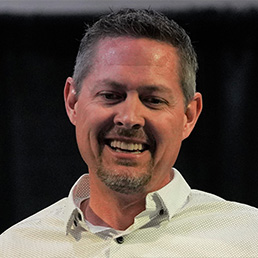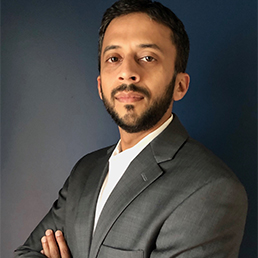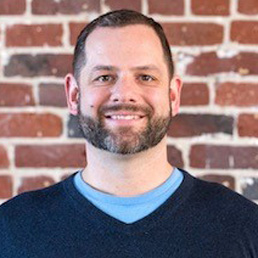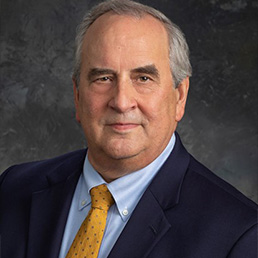Manufacturing Digital Twins Industry Information Day
A look inside the challenges and requirements for utilizing digital twins in manufacturing.
11:00 am – 1:30 pm ET
Manufacturing is going increasingly digital. Digital twins are being applied during the engineering, design, production, and operations phases of a product lifecycle to improve products and predict and detect problems. They represent an enormous opportunity for manufacturers, spanning engineering, design customization, production, and operations.
The Digital Twin Consortium Manufacturing Working Group is addressing this opportunity every day. Comprising the world's leading experts and thought leaders in digital twins, the Working Group focuses on the applicability of digital twins to the manufacturing process in various industries. The group is exploring the use of digital twins to:
- Accelerate product development, increase uptime, and reduce manufacturing costs.
- Identify applications and use cases in manufacturing.
- Apply digital twins at different stages of the product lifecycle
- Identify standards gaps and requirements, and
- Determine the need for manufacturing interoperability.
The progress of the Working Group will be the focus of Manufacturing Industry Info Day, taking place on April 20. In this virtual conference, experts from various segments of the manufacturing industry will share their respective companies' journey with digital twins, with a focus on challenges and requirements. Info Day will also include a discussion of the recently released ISO standard for digital twins in manufacturing. There will be a discussion and Q&A with the speakers and Co-Chairs of the working group at the end.
Speakers and Panelists

Paul Schneider
Principal Engineer at Intel Corporation – Manufacturing IT, Intel

Sameer Kher
Senior Director, Product Development, Ansys

Nicolas Waern
CEO and Founder, WINNIO

Todd Edmunds
Global CTO and Strategic Innovation, Dell Technologies

Mike Geyer
Product Manager, Omniverse, NVIDIA

Dave Vasko
Senior Director of Advanced Technology, Rockwell Automation

Pieter Van Schalkwyk
CEO and Founder, XMPro

Dr. Don Kinard
Senior Fellow, Lockheed Martin Aeronautics Production Operations, Lockheed Martin
The panelists will provide examples and uses cases, and discuss how to get involved in Consortium initiatives such as the Technology Showcase, which help our members drive market growth through innovation, collaboration, and implementation.
Agenda
| time | presentation |
|---|---|
| 11:00 am | Welcome and Overview Dan Isaacs, CTO, Digital Twin Consortium Sameer Kher, Senior Director, Product Development, Systems and Digital Twins at Ansys |
| 11:10 am | The Digital T's – Threads, Twins, Technology, and Transformation Dr. Don Kinard, Senior Fellow, Lockheed Martin Aeronautics Production OperationsThe Aerospace industry has been utilizing the digital thread (Model Based Engineering) to create digital twins for many years. In addition, the digital thread spawned advanced manufacturing technologies such as structured light, optical projection, metrology guided automation, and augmented reality. More recently, computing power and advanced analysis technology are facilitating the next generation of modeling and simulation tools aimed at reducing product time to market and supporting simulation-based requirements verification. The combination of Threads, Twins, & Technology and the AI enhanced computational power is fueling Digital Transformation. |
| 11:30 am | How Digital Twins Are Providing Real Value to Manufacturing Dave Vasko, Senior Director Advanced Technology, Rockwell AutomationDigital Twins, living replicas of manufacturing lines and equipment are leveraging simulation of physical properties and machine learning/artificial intelligence to drive real value by reducing installation and commissioning time, training operators to be productive on day one, optimizing plant operations and predicting potential failures before they occur. |
| 11:50 am | Building Omniverse Digital Twins for Factory & Warehouse Mike Geyer, Product Manager, Omniverse, NVIDIAThe world has recently become increasingly dependent on remote collaboration. This change has intensified the need for platforms that can not only facilitate collaboration, but expand the means by which we communicate. This requires complex simulation and the introduction of AI for industrial Digital Twins.At NVIDIA, we believe a common, open, and extensible platform that is globally accessible and AI enabled will play a significant role in this new paradigm. That is why we are building Omniverse, and this panel will explore how Omniverse is being applied today and where it will go in the future.To NVIDIA, true digital twin is a living version of a complex physical system like a factory or warehouse. A true digital twin must: • Be physically accurate, true-to-reality |
| 12:10 pm | Building and Managing a Digital Twin Based Semiconductor Manufacturing Operation Paul Schneider, Principal Engineer, Intel Corporation – Manufacturing ITSemiconductor manufacturing requires an unwavering commitment to process reliability and yield. This session will explore how we are using digital twins to model scheduling, visualize factory layout and flow, simulate manufacturing operations, and tailor complex processes that meet both critical production requirements and customer expectations. MES, SPC, and even sensor data is used in simulations and fed back into the real-time systems optimize the manufacturing process. |
| 12:30 pm | Is ISO 23247:2021 a Digital Twin Standard for Manufacturing and how does it fit with existing manufacturing standards? Pieter van Schalkwyk – CEO and Founder, XMProThe recently published ISO 23247:2021 Digital Twin Framework for Manufacturing (Parts 1-4) sets out guidelines for using digital twins in manufacturing. Part 1 provides an overview and discuss general principles while Part 2 focuses on a reference architecture. Part 3 describes the digital representation of manufacturing elements and part 4 explains how to manage information exchange.In this presentation Pieter will address 3 main questions that manufacturers need to consider when considering this specification.• What is ISO 23247:2021 by way of an example? • How does standard impact other standards such as STEP, OPC US, and Asset Administration Shell? • How does this relate to DTC initiatives such as the Capabilities Periodic Table? |
| 12:50 pm | Member Presentations Panel Discussion: Manufacturing Industry Roundtable Moderated by the Co-Chairs of the DTC Manufacturing Working Group: Sameer Kher, Ansys; Todd Edmunds, Dell Technologies; Nicolas Waern, WINNIO |
